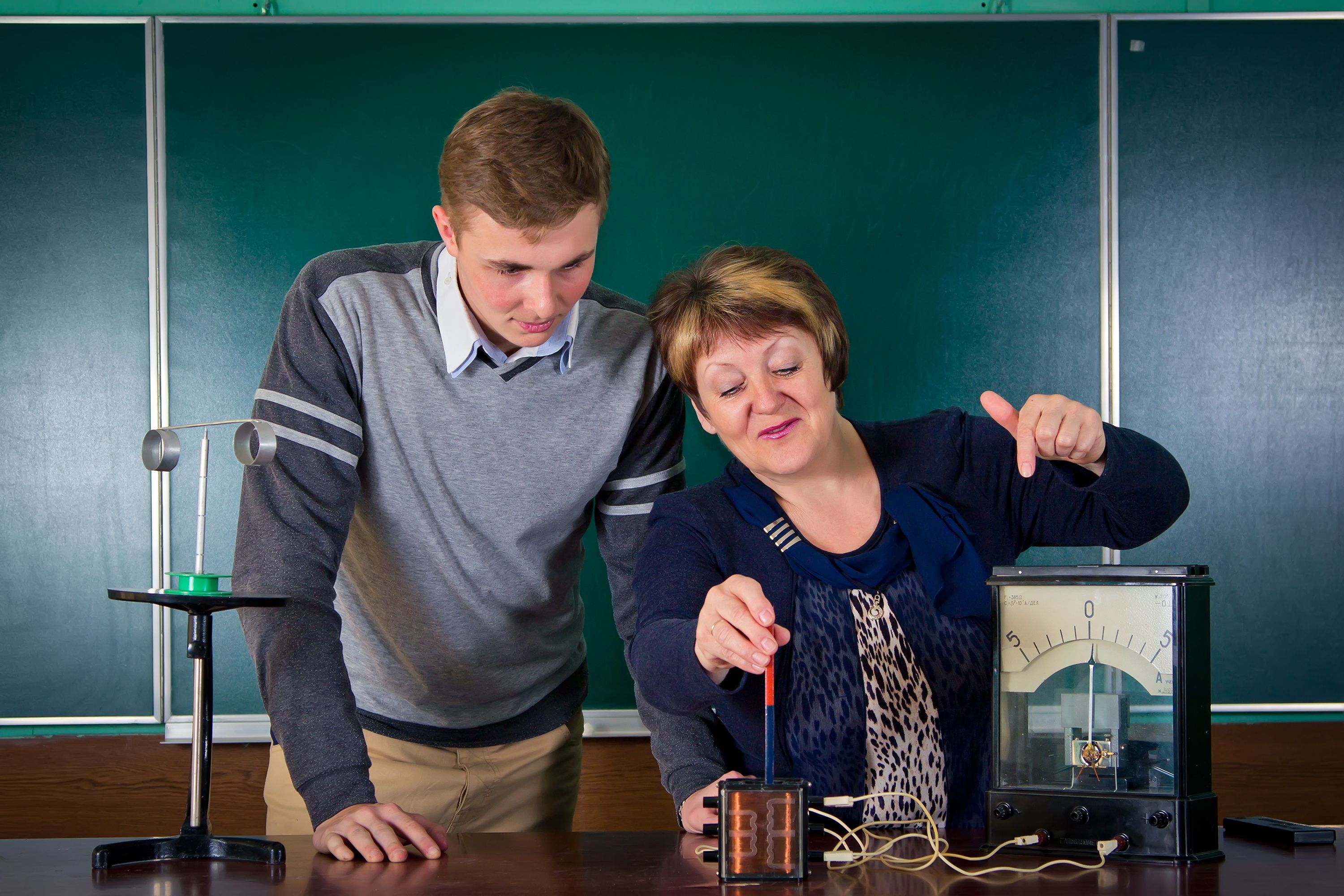PhysTEC staff and community members explored the available research and expert advice on what makes an effective teacher of secondary physics in order to support and evaluate the impact of its programs to increase the number of qualified secondary physics teachers.
Physics Content Knowledge
Since the late nineteenth century, those engaged in the professional preparation of physics teachers have agreed that teachers should have a solid understanding of more physics content than they are expected to teach (Wead, 1884; Meltzer et al., 2012; Morrell et al., 2019). Since the 1940s at the latest, the consensus has been that physics teachers should have preparation equivalent to a physics major or minor, roughly equal to 24 or more credit hours of study (Meltzer, 2019).
What little research there is on the question agrees with this consensus view. For example, recent studies have found that:
- Students of out-of-field chemistry and physics teachers did not perform as well on standard assessments as students of certified teachers (Sheppard et al., 2020); and
- Secondary students’ achievement in Algebra I was associated with their teachers’ performance on the mathematics content Praxis exam (Stewart et al., 2019).
Currently, many practicing physics teachers have little background or expertise in physics themselves. This is one element of the shortage of qualified teachers.
Physics-specific Pedagogical Training
Methods of teaching physics by inquiry are nowhere to be found in the standard physics curriculum, and so require targeted instruction most efficiently accomplished in separate courses for physics teachers. This has also been the expert consensus for over a century. In addition to C. K. Wead’s early appeal (1884), specific recommendations for such courses have been repeated by various committees and reports in 1960, 1968, 1973, and most recently by T-TEP in 2012 (Meltzer et al., 2012). A vast number of additional citations in support of these recommendations—made by physics educators over the years—can be found in the T-TEP report. Many of them also point to the fact that a teacher’s level of experience is important for their effectiveness, and suggest the need for more pedagogical knowledge.
Research in physics education over the past three decades has consistently found that pre- and in-service physics teachers often underestimate and/or do not address their students’ ideas and “alternative conceptions” in physics, implying a need for content-focused pedagogical instruction (Meltzer, 2011). In addition, special courses on physics concepts and pedagogy for teachers have often been shown effective in improving their physics content understanding and/or physics teaching practices, as well as their students’ learning (Meltzer, 2011).
How to Prepare More Highly Qualified Teachers
Successful teacher preparation programs ensure preservice teachers meet both of these qualifications. PhysTEC offers varied support for institutions looking to implement effective teacher preparation programs. These include guidelines and resources for giving students appropriate knowledge and skills for physics teaching, and grants or professional development to assist with effective and sustainable implementation.
To measure the effectiveness of PhysTEC efforts, PhysTEC tracks whether graduates of PTE programs it supports completed a program in teacher education intended to culminate in certification or licensure. In addition, all graduates of PhysTEC-supported programs have a degree in physics or the equivalent.
PhysTEC recommends that PTE programs also include physics-specific pedagogical training in addition to a physics degree.
Only 43% of new secondary physics teachers have a related degree (White, 2018), while 100% of PhysTEC graduates have such a degree.
References
Meltzer, D. E. (2011). “Research on the Education of Physics Teachers,” in Teacher Education in Physics: Research, Curriculum, and Practice, David E. Meltzer and Peter S. Shaffer, eds., (College Park, Maryland: American Physical Society, 2011), 3-14.
Meltzer, D. E. (2019). “Physics Teacher Preparation: The Conflict Between Recommendations and Reality,” Bulletin of the American Physical Society (College Park, Maryland: American Physical Society, 2019).
Meltzer, D. E., M. Plisch, and S. Vokos (2012). Transforming the Preparation of Physics Teachers: A Call to Action. A Report by the Task Force on Teacher Education in Physics (T-TEP) (American Physical Society, College Park, MD, 2012), 25.
Morrell, P. D., M. P. Rogers, E. J. Pyle, G. Roehrig, and W. Veal, “Preparing Our Next Generation of Science Teachers: What Should a Science Teacher Know and Be Able to Do?” (blog), September 25, 2019, https://aaas-arise.org/2019/09/25/preparing-our-next-generation-of-science-teachers-what-should-a-science-teacher-know-and-be-able-to-do/
Sheppard, K., Padwa, L., Kelly, A. M., & Krakehl. R., “Out-of-field teaching in chemistry and physics: An empirical census study,” Journal of Science Teacher Education, 31 (2020). Advance online publication. doi: 10.1080/1046560X.2019.1702268
Stewart, J., Rhoads, C., Serdiouk M., Van Dine, D., Cherasaro, T., & Klute, M., “Associations between the qualifications of middle school Algebra I teachers and student math achievement, 2019. Washington, DC: U.S. Department of Education, Institute of Education Sciences, National Center for Education Evaluation and Regional Assistance, Regional Educational Laboratory Central. Retrieved from http://ies.ed.gov/ncee/edlabs.
Wead, C. K., Aims and Methods of the Teaching of Physics. Circulars of Information of the Bureau of Education, No. 7 (1884): 125. eBook link.
White, S. (personal communication), Statistical Research Center, American Institute of Physics (2018)
